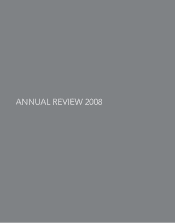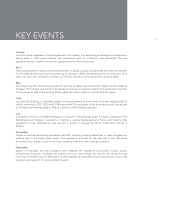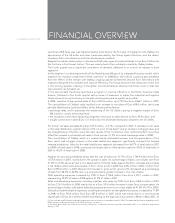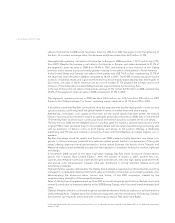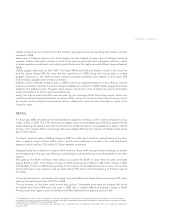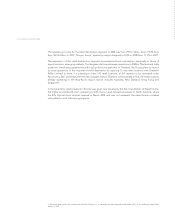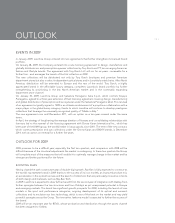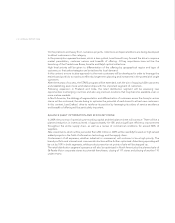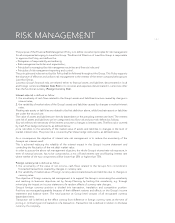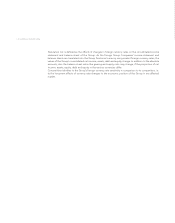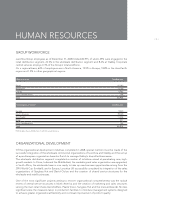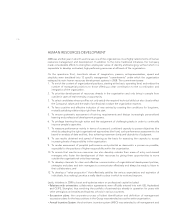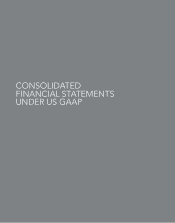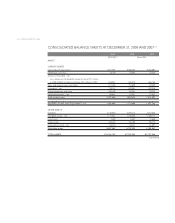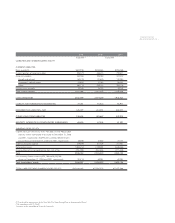LensCrafters 2008 Annual Report Download - page 45
Download and view the complete annual report
Please find page 45 of the 2008 LensCrafters annual report below. You can navigate through the pages in the report by either clicking on the pages listed below, or by using the keyword search tool below to find specific information within the annual report.
|43 <
RISK MANAGEMENT
The purpose of the Financial Risk Management Policy is to define consistent principles for risk management
for all companies belonging to Luxottica Group. The Board of Directors of Luxottica Group is responsible
to approve this Policy and defines the:
•Delegation of responsibility and authority;
•Risk management activities and organization;
•Principles for managing the risk management activities and financial risks and
•Principles of risk management reporting and control.
The principles and rules set out by this Policy shall be followed throughout the Group. This Policy supports
the objective of effective and uniform risk management in the interest of the entire company belonging to
Luxottica Group.
Luxottica Group’s financial risks are related either to financial assets and liabilities denominated in local
and foreign currencies (Interest Rate Risk) or to incomes and expenses denominated in currencies other
than the functional currency (Foreign Currency Risk).
Interest rate risk is defined as follow:
1. the uncertainty of cash flows related to the Group’s assets and liabilities structure caused by changes in
interest rates;
2. the variability of market value of the Group’s assets and liabilities caused by changes in market interest
rates.
Floating rate assets or liabilities are related to the first definition above, while fixed rate assets or liabilities
are under the second one.
The value of assets and liabilities are directly dependent on the prevailing interest rate level. The interest
rate risk of assets and liabilities can be categorised into
flow risk
and
price risk
defined as follows:
flow risk
refers to the sensitivity of the interest amounts to changes in interest rates. The flow risk is covered
by Cash Flow hedge instruments, as defined below.
price risk
refers to the sensitivity of the market value of assets and liabilities to changes in the level of
market interest rates. The price risk is covered by Fair Value hedge instruments, as defined below.
As a consequence the objective of interest rate risk management is to reduce the uncertainty of the
Group’s net interest result.
This is achieved reducing the volatility of the interest impact in the Group’s income statement and
controlling the fluctuation of the net debt market value.
In order to pursue the above risk management objective, the whole Group’s interest rate risk exposure, in
term of notional amount, has to be composed as a mix of fixed interest rate and floating interest rate
where neither of the two components will be lower than 25% or higher than 75%.
Foreign currency risk is defined as follow:
1. the uncertainty of the value of net income, cash flows related to the Group’s firm commitment,
forecasted transactions created by changes in currency rate;
2. the variability of market value of foreign-currency-denominated assets and liabilities due to changes in
currency rates.
The objective of foreign currency risk management is to support the Group in minimising the uncertainty
and reaching its business objectives set by Group Planning by limiting this uncertainty, e.g. through
minimizing the impact on income statement of a random effects of currency rate changes.
Group’s foreign currency position is divided into transaction, translation and competitive position.
Positions are managed separately because of their different natures and effects on the Group’s income
statement and balance sheet. The total position at Group level consists of all recognised currency
dependent items.
Transaction risk
is defined as the effect coming from difference in foreign currency rates at the time of
pricing or contracting and of realization of a transaction. Transaction risk is defined in relation to the base
currency of a company.


